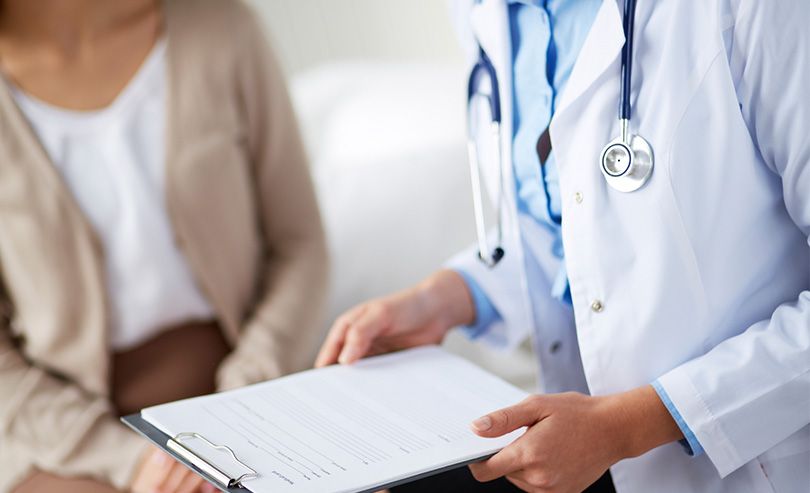How to Avoid a COPD Exacerbation
If you have COPD, knowing the signs of a COPD exacerbation and a few tips for preventing one can help decrease the number, length and severity of your flare-ups.
Generally speaking, the worse the underlying COPD is, the more likely it is that a person will experience an exacerbation. These flare-ups usually start from a lung infection or exposure to air pollutants. Ignoring the signs can lead to hospital admission and faster deterioration of your lung function.
1. Avoid Infections Such as Colds and Flu
Since many viruses and bacteria spread by direct contact, wash your hands often. If you can’t get to a sink, use hand sanitizer. Avoid close contact with anyone who has a cold or flu. Don’t cover your sneezes and coughs with your hands, but rather use a tissue, which you should throw it away after using it.
Photo Credit: vvs1976 / istockphoto.com
2. Keep Your Immune System Strong
Boost your immune system with a healthy diet, regular exercise and enough sleep. This will help prevent infections and also help your lungs and the entire body to work at their best. A healthy diet would include fresh fruits and vegetables, whole grains, lean meats and fish, while avoiding highly processed foods.
COPD is associated with multiple nutrient deficiencies, including omega 3 fatty acids, vitamins A, C, E, magnesium. These deficiencies can be corrected with a good diet and supplements.
Photo Credit: ssuaphoto / istockphoto.com
3. Avoid Environmental Pollutants
You may not be able to control the quality of the air you breathe, but you can limit your exposure to pollutants, which are well known triggers of COPD flare-ups.
Get in the habit of checking the air quality index (AQI) on AIRNow.gov. Exercise early in the morning when ozone is low, especially on warmer days in the summer. Exercise indoors more often, or if you choose outdoors, try to not run or bike within 400 meters of a busy roadway. Avoid rush hour traffic, when the air pollution is high.
When sitting in your car, set the fan on re-circulate and regularly replace the car’s air filters. For your home, consider investing into HEPA filters, ventilating rooms by opening windows regularly, removing clutter (which collects dust), and keeping the floors and carpets clean. Do not allow smokers to smoke around you, especially when you are indoors.
Photo Credit: BCFC / istockphoto.com
4. Take Your Medication as Prescribed
Your lungs will work at peak levels if you take your inhaled beta agonists, steroids and/or anticholinergic medication as recommended, as these drugs help prevent COPD exacerbations. Make sure you see your doctor regularly, as the dosage may need to be adjusted over time. Use antibiotics and other drugs quickly when your doctor gives them for infections or sinus problems.
If your doctor has recommended oxygen therapy, make sure you use it. Studies have found oxygen therapy used for more than 15 hours daily can help manage COPD, and also improve the quality of your life, helping you to live longer and healthier.
Photo Credit: shironosov / istockphoto.com
5. Follow a Pulmonary Rehab Programme
The goal of rehab is to help your lungs work better and more efficiently. During rehab classes you will learn about breathing techniques, your medication, nutrition, relaxation, how to travel and ways to perform daily tasks with less effort so you can stay healthy and avoid exacerbations.
In order to qualify for respiratory rehab you need to have a referral from your doctor along with spirometry test performed in the past year that confirms your diagnosis of COPD .
Photo Credit: Mathisa_s / istockphoto.com
6. Check Your Lung Function Regularly With Hand Held Spirometer
These devices are helpful for detecting a flare-up early so it can be managed sooner rather than later. A spirometer measures the total amount you are able to exhale (the forced vital capacity or FVC) and how much air was exhaled in the first second (the forced expiratory volume in one second or FEV1). The results of a spirometry test also help your doctor to evaluate how well your medication is working and if your condition is stable, improving or decreasing.
Photo Credit: lisafx / istockphoto.com
7. Know the Signs
Be aware of the early signs of a COPD flare-up and call your doctor if you have one or more of the following symptoms, as you may need to go to the hospital for urgent treatment:
- Increased shortness of breath or feeling breathless when at rest or with little physical activity.
- Wheezing or rattling sounds. These may reflect an obstruction of the airways caused by excessive mucus, pus, inflammation or accumulation of fluid in the lungs
- Irregular breathing or the need to use more the chest muscles to breathe, rather than using the diaphragm.
- Worsening of your cough. This could mean becoming more frequent or more severe, or if you notice a change in the color of the phlegm (i.e. green or bloody phlegm).
- Changes in the color of your skin (i.e. more bluish or gray) or nails (more blue or purple) can also be signs of an exacerbation.
- Trouble sleeping or eating because your symptoms are interfering with your ability to eat or lie down and sleep.
- Difficulty talking because your breathing problems are too severe. In this case you should use hand gestures to communicate to a family member that are not feeling well.
- Feeling more stressed and anxious may occur because of the inability to breathe is suddenly worse.
- Developing of new symptoms like swelling of the ankles, abdominal pain or early morning headaches. Swollen ankles can be a sign of heart and lung damage while - headaches that occur early in the morning can be a sign of COPD flare-up because they may be due to low oxygen levels and build up of carbon dioxide in the blood.
Read more about COPD exacerbations and pulmonary rehab for COPD patients over at NewLifeOutlook.
[youmaylike_amp]